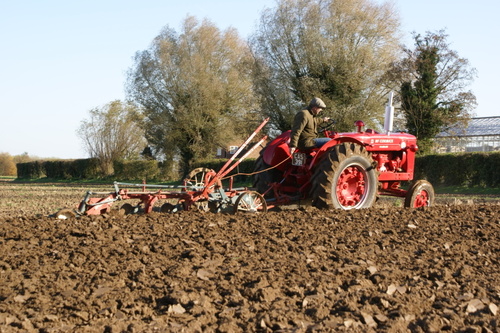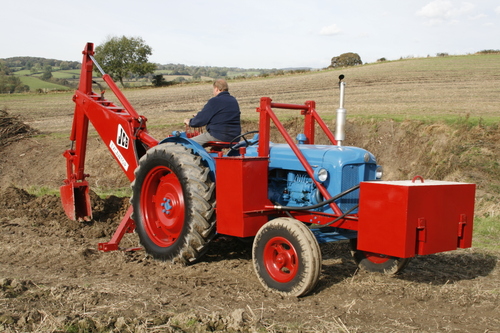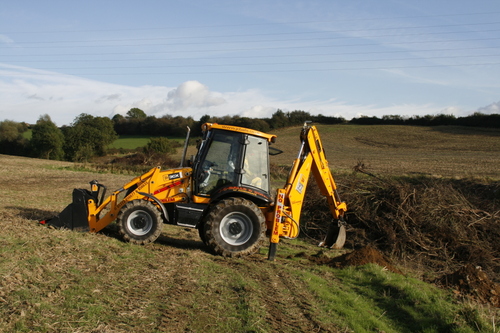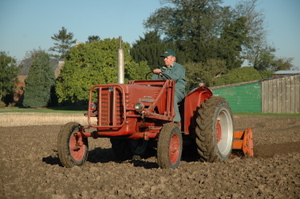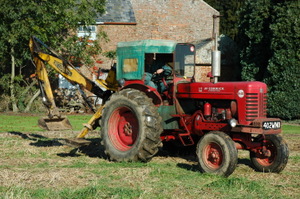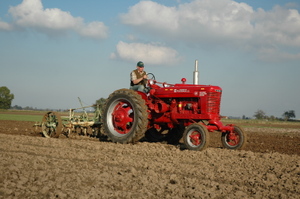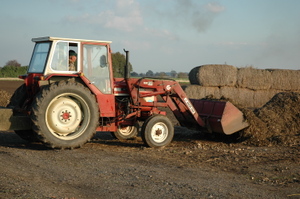We're just back from Garzweiler, near Dusseldorf, Germany, where we were filming bucketwheel excavators and other open-cast coal-mining activities. Our hosts were RWE, providers of 30% of Germany's electrical energy. Our guide was Thomas Saus from their public relations department.
The Garzweiler site is some 20 square kilometres, in a C-shape as it bends around a rocky outcrop. That's one thing we learned about the bucketwheel excavator system: it works fine with soft deposits such as sand and lignite (brown coal) but doesn't work with any sizeable rock deposits.
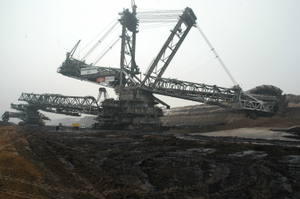 This is number 285 at Garzweiler, so it's not the very largest machine. It can handle 200,000 cu metres of material a day. The bucketwheel on the right-hand side of the picture rotates to collect overburden (the sand on top of the coal deposits).
This is number 285 at Garzweiler, so it's not the very largest machine. It can handle 200,000 cu metres of material a day. The bucketwheel on the right-hand side of the picture rotates to collect overburden (the sand on top of the coal deposits).
The soil is conveyed to the centre of the machine, then down to the linked conveyor extending to the left. From there it joins another conveyor system which takes the material to the central conveyor junction, a kilometre or two away.
The right-hand boom moves up and down. The central tower turns 360 degrees horizontally. Beneath the tower is a set of tracks on which the whole machine moves forwards and backwards. The conveyor on the left is on a similar set of tracks. The linked machines have an operator each.
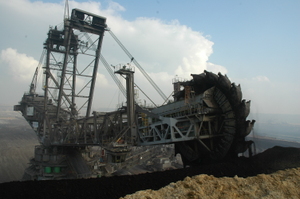 A view of the business-end of 288, the size of bucketwheel excavator that is the largest in the world. Capacity: 240,000 cu metres a day.
A view of the business-end of 288, the size of bucketwheel excavator that is the largest in the world. Capacity: 240,000 cu metres a day.
We recorded the excavators for a programme we are making with Keith Haddock the Canadian writer on mining and its machinery. Keith is a retired mining engineer.
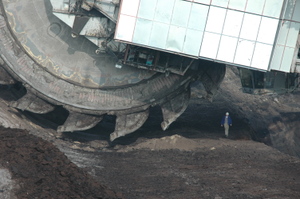 If you double-click on the third photograph you should find a clearer image which will give you a better idea of the scale of this machine.
If you double-click on the third photograph you should find a clearer image which will give you a better idea of the scale of this machine.
It has come to a halt because it has uncovered a small rocky outcrop. The buckets can lift rocks, but the thick rubber conveyors will be damaged and blocked by them. The engineers were getting ready to have a Cat D8 make a path down from the level above to rip the rocks out.
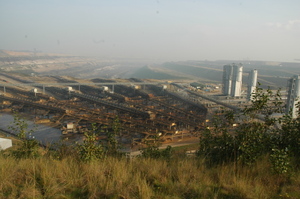 I was really impressed by the conveyor system. The overburden and coal are brought in by conveyors from the mining area to the left-hand side of the picture, each excavator having its own line. The material can be transferred at this junction to any of the conveyors going out on the right-hand side of the picture.
I was really impressed by the conveyor system. The overburden and coal are brought in by conveyors from the mining area to the left-hand side of the picture, each excavator having its own line. The material can be transferred at this junction to any of the conveyors going out on the right-hand side of the picture.
They exit to about four spreaders or two or three conveyors going to the coal bunkers, depending on the material excavated and requirements. This is all controlled by computer.
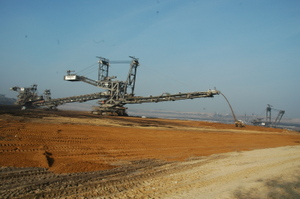 At the very end of one of the conveyors, maybe 3 kilometres from where the soil was extracted, a spreader is depositing overburden. This is moved by a Cat D8.
At the very end of one of the conveyors, maybe 3 kilometres from where the soil was extracted, a spreader is depositing overburden. This is moved by a Cat D8.
